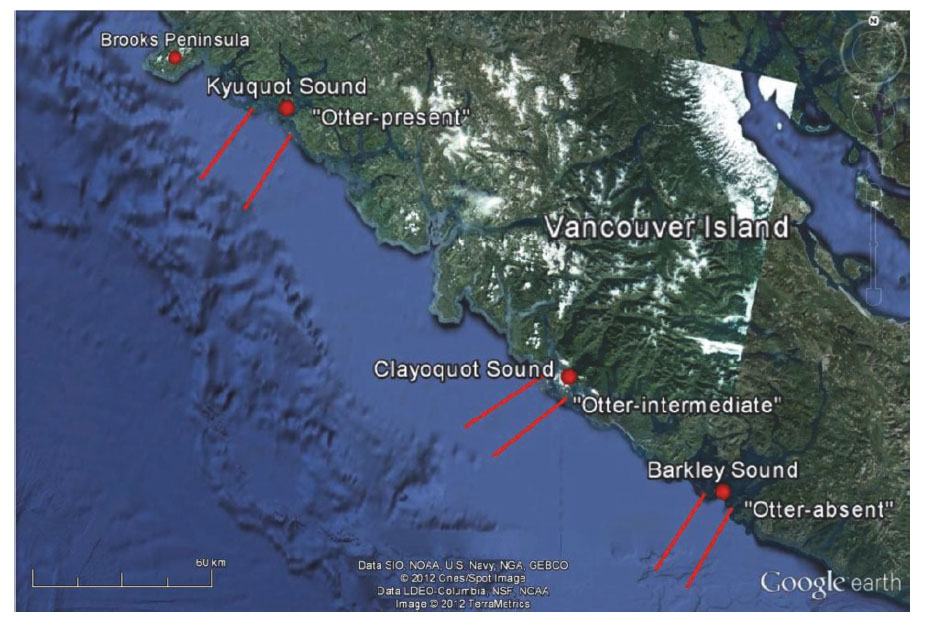
Ecological Archives E096-080-A1
J. L. Clasen and J. B. Shurin. 2015. Kelp forest size alters microbial community structure and function on Vancouver Island, Canada. Ecology 96:862–872. http://dx.doi.org/10.1890/13-2147.1
Appendix A. Figures showing (Fig. A1) sampling location along the West Coast of Vancouver Island, British Columbia, Canada, (Fig. A2) example alginate lyase activity assay, and (Fig. A3) example regressions from the dilution experiments used to determine grazer-mediated bacterial mortality and bacterial growth rates.
Fig. A1. Sampling location along the West Coast of Vancouver Island, British Columbia, Canada. Samples were located along stations 0, 250, and 500 m offshore of Macrocystis spp. Kelp forests along three transects in two regions. The large kelp forest and sea otter present region was Kyuquot Sound; sea otter have been present here for over 20 years. The small kelp forest and sea otter absent region was Barkley Sound. Map reproduced from Ramshaw 2012 with Google Earth.
Fig. A2. Example alginate lyase activity assay. Absorption at 235 nm in the seawater samples incubated with alginate is plotted vs. incubation time (hours). Treatment (3) and control (2) incubations are indicated. Slope coefficients between 0–24 hours and 24–48 hours were calculated for each treatment and used as repeated measures in a RM ANOVA.
Fig. A3. Example regressions from the dilution experiments used to determine grazer-mediated bacterial mortality and bacterial growth rates. Dark gray is the apparent growth rate (k) of bacteria vs. fraction of seawater in dilution regression in the large kelp forest region while the light gray is the regression from the small kelp forest region. In both cases, the slope coefficient is the rate of microzooplankton-mediated bacterial mortality and the y-intercepts is the bacterial growth rate in the seawater sample.